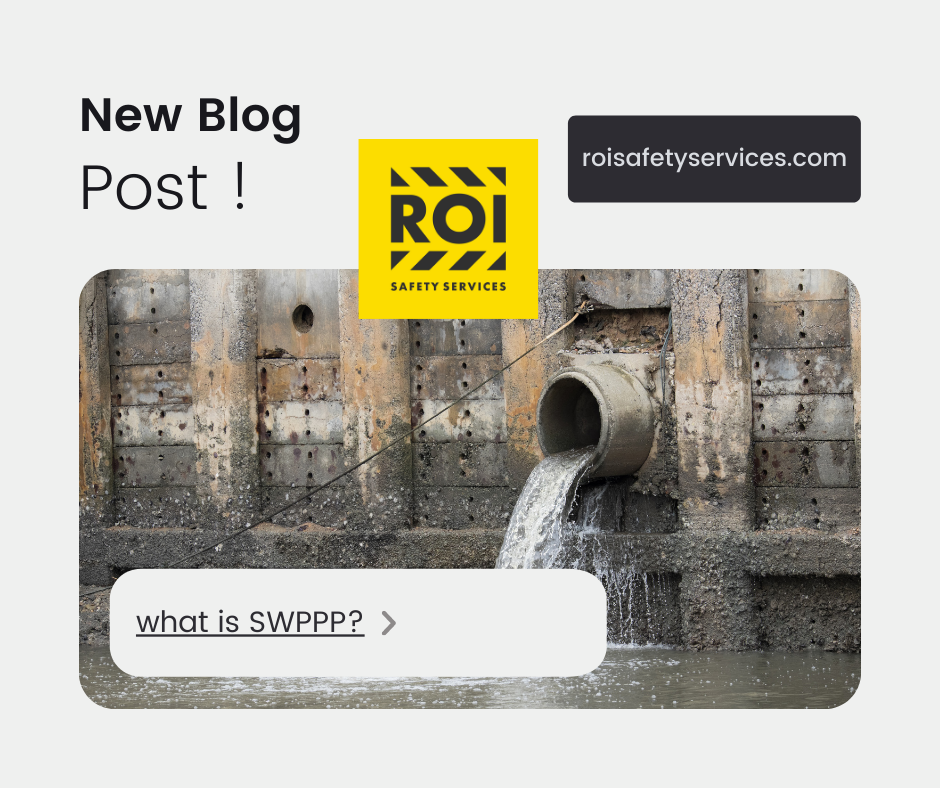
What is a SWPPP?
A Stormwater Pollution Prevention Plan (SWPPP) is a site-specific, written document that outlines potential sources of stormwater pollution at a construction site. The SWPPP will describe the Best Management Practices (BMPs) used to reduce pollutants in stormwater discharges from the site.
This article is a quick reference guide, but more comprehensive information on the SWPPP development and maintenance process can be found in official EPA instructions, which offer thorough instructional material.
Who Needs a SWPPP?
On October 2, 2019, Governor Gavin Newsom signed SB 205 (2019), which became effective January 1, 2020. This Senate Bill requires a person applying to a city or county for a new or renewed business license to demonstrate enrollment in a National Pollutant Discharge Elimination System (NPDES) storm water permit, if such a permit is required. Prior to the issuance or renewal of a business license, the city or county determines whether any of the primary Standard Industrial Classification (SIC) codes provided by the business are potentially regulated by the NPDES General Permit for Storm Water Discharges Associated with Industrial Activities (Industrial General Permit).
The requirements of Senate Bill 205 solely impact businesses with operating facilities with regulated industrial activities.
Why is a SWPPP Important?
The EPA and the state department of environmental quality officials may bankrupt unprepared businesses with lawsuits. Even people with the greatest of aims can inadvertently run afoul of EPA rules.
A California firm, for example, was fined $3.7 million for polluting a river. The company even had a SWPPP in place, but it was declared unlawful by the Clean Water Act, resulting in an enormous penalty—said to be one of the highest in California history.
No one wants to be the target of such a lawsuit, let alone endure the public shame that will come with it. And you don’t have to if you properly implement an SWPPP.
How do I Develop a SWPPP?
Developing a SWPPP is an important part of reducing pollution. A well-developed plan will help prevent the uncontrolled release of sediment, chemicals, petroleum products and other pollutants into your local waterways. These pollutants can be deadly to people, animals, plants and aquatic life.
What Should a SWPPP Include?
Having a thorough strategy allows you to be financially secure while also protecting groundwater and neighboring properties. The SWPPP is a checklist of all potential pollution sources that might come into touch with stormwater as it leaves a site, and it should include the following components:
- Site map and description
- Descriptions of activities that could cause pollution
- Best Management Practices & control measures for preventing pollution
- Procedures for conducting inspections and monitoring
- Plans for keeping your SWPPP up to date
Duties and Responsibilities
Each item must be clearly identified in a SWPPP, with the contractor or subcontractor that will implement each designated measure. These contractors are also frequently required to sign a certification stating that they will adhere to the requirements and conditions set forth in applicable state laws and the SWPPP.
When operations or other site-based modifications impact the SWPPP, it should be updated. Because the company earlier mentioned failed to modify its plan and install anti-pollution equipment as a result of changes, it was fined.
The following are some of the examples of changes that might necessitate an SWPPP update:
- The introduction of a new chemical or procedure
- The removal of processes, tanks, or chemicals
- Moving an operation or storage to a different location.
- Changes in personnel who are involved with the plan
Even if nothing changes, the SWPPP should be evaluated and modified as needed each time the NPDES permit is up for renewal. Staying on the legal side can help your business avoid getting fined by regulators.
Contact ROI for CERTIFIED ON-SITE STORMWATER CONSULTING & MONITORING SERVICES to get assistance with SWPPP compliance.
CLICK HERE FOR MORE INFO ON HOW SENATE BILL 205 MIGHT AFFECT YOUR BUSINESS

